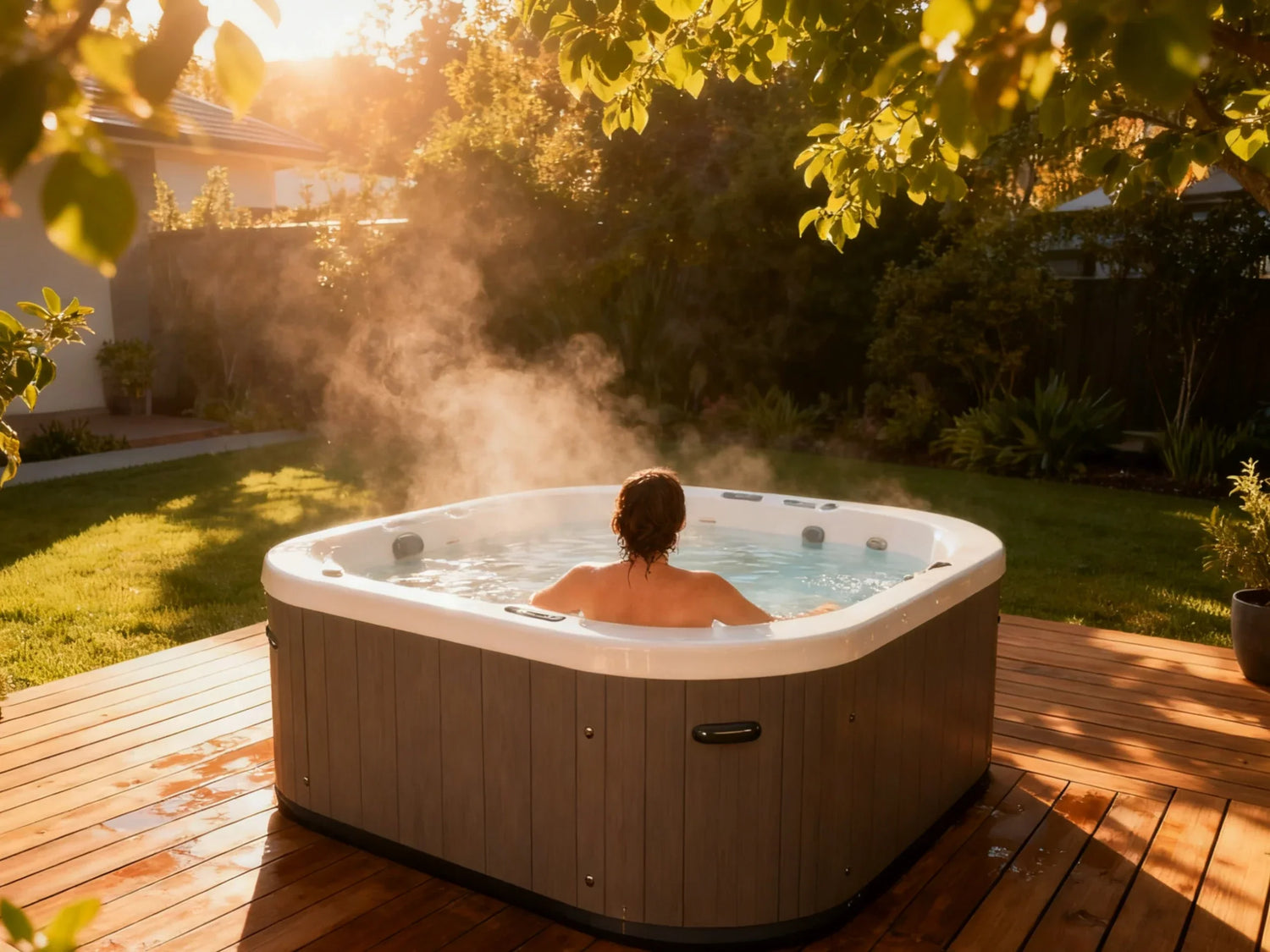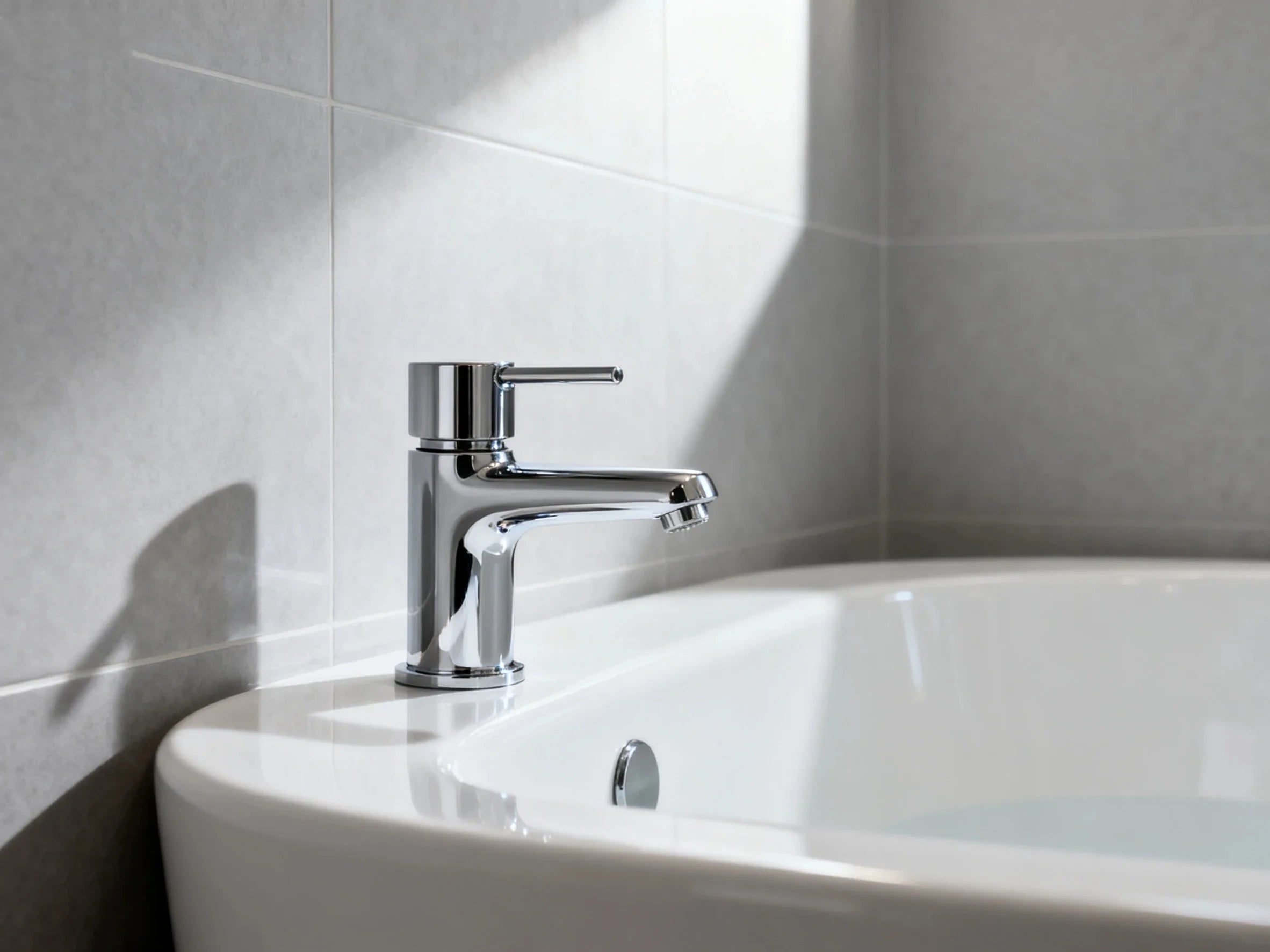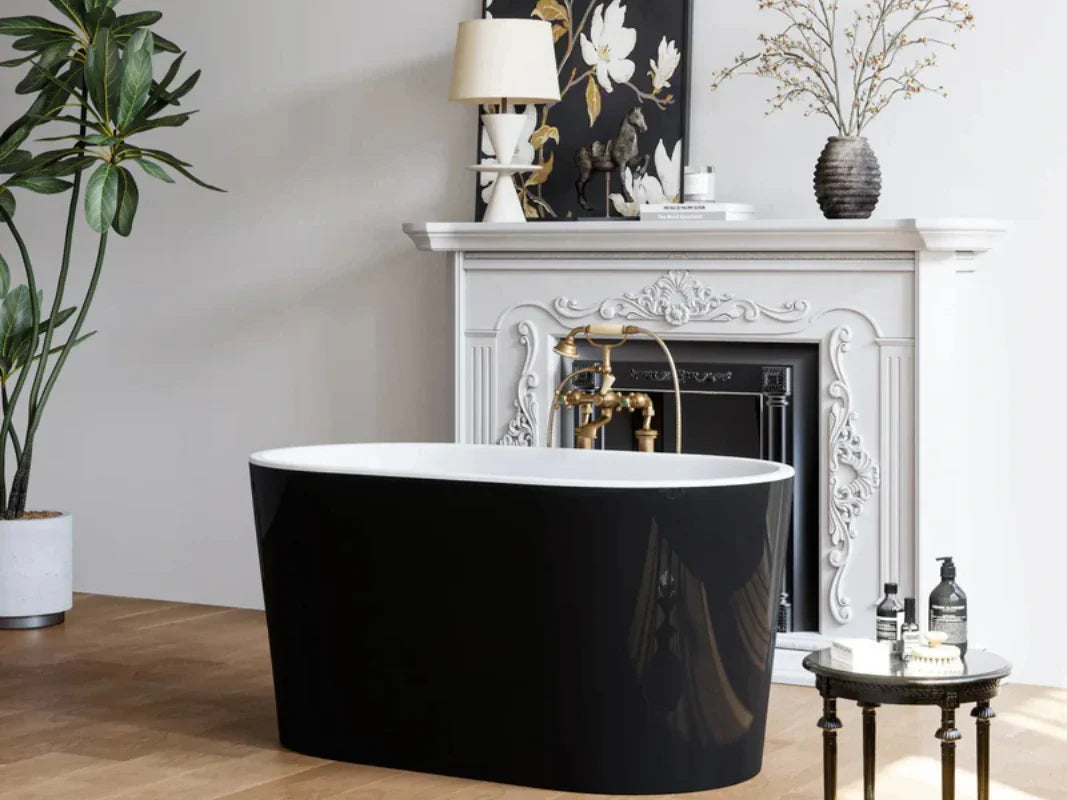Spa vs Hot Tub: Quick Comparison
Definitions that matter
- A spa here means a built-in spa, typically in-ground or partially in-ground. It often connects to a swimming pool, but it can be a stand-alone. It use分s strong hydrotherapy jets and ergonomic seats for therapy and deep relaxation. It's a permanent structure.
- A hot tub means an above-ground, portable tub with a shell (often acrylic or rotomolded), cabinet, cover, and self-contained equipment. It comes ready to set on a pad or deck with minimal site work. Some are 110V plug-and-play; many are 220–240V for stronger heating and jets.
- A spa pool is a common term in Australia and New Zealand for a hot tub or a small pool with seating and jets.
- "Whirlpool bath" or "spa bathtub" usually refers to an indoor bathtub with jets. This answers the common question "what is spa tub", and it is not the same as an outdoor hot tub or in-ground spa.
- Some people use brand names as a general term for all hot tubs. Those are trademarks of specific companies, not generic labels.

- Spa: in-ground, permanent, stronger therapy focus
- Hot tub: above-ground, portable, social relaxation and easy upkeep
- Spa pool (AU/NZ): often the same as hot tub
- Spa bathtub: indoor jetted tub, not for outdoor soaking year-round
At-a-glance differences
| Aspect | Spa (In-Ground) | Hot Tub (Portable) |
| Design/Install | Built-in, in-ground; permanent; often integrated with a pool | Above-ground; portable; set on pad or reinforced deck |
| Jet Power | Often higher power, deep hydrotherapy zones | Light to moderate jets; premium units offer stronger massage |
| Capacity | 4–8+ seats | 2–6 seats |
| Typical Temperatures | About 95–100°F (35–37.7°C) | Up to about 102°F (38.8°C) |
| Maintenance | More complex; larger water volume | Easier; smaller volume; components are accessible |
| Lifespan | ~20+ years | ~10–20 years |
| Energy Efficiency | Often lower due to size and exposure | Often higher with full-foam insulation and tight cover |
| Upfront Cost (typical) | $5,000–$15,000+ installed (customs higher) | $2,000–$10,000+ |
| Install Time | Weeks (site work, trades, permits) | Hours to a few days |
- Capacity: spa 4–8+ (some large tubs and custom sizes available); hot tub 2–6
- Typical temps: spa ~95–100°F; hot tub up to ~102°F
Best use-cases by profile
| Owner profile | Best Fit | Why |
| Therapy seekers | Spa | Strong, targeted hydrotherapy; ergonomic seats |
| Athletes | Spa or premium hot tub | Deep jets for recovery; hot tub wins for convenience |
| Families | Hot tub | Easier care; good for 2–6 people; quick heat and use |
| Renters | Hot tub | Portable; plug-and-play options; easy to resell or move |
| Frequent movers | Hot tub | Less commitment; simple removal |
| Entertainers | Either | Spa for integrated look; hot tub for flexible seating and lighting |
Key stats snapshot
| Metric | Spa (In-Ground) | Hot Tub (Portable) |
| Water Volume | 500–1,000+ gallons | 250–500 gallons |
| Therapeutic Jets | 20–40+ on high-end builds | 4–12 on basic; 20–40+ on premium |
| Lifespan | ~20+ years | ~10–20 years |
Spa vs Hot Tub: Cost & Total Cost of Ownership (TCO)
Upfront price ranges and installation scenarios
| Tier | Spa (In-Ground) Installed | Hot Tub (Portable) |
| Entry | $5,000–$10,000 (simple stand-alone, basic finish) | $2,000–$4,000 (smaller, 110V options) |
| Mid | $10,000–$20,000 (integrated with pool or custom seating) | $4,000–$7,000 (220–240V, better insulation, more jets) |
| Premium | $20,000–$40,000+ (custom shapes, tile, lighting, automation) | $7,000–$10,000+ (full-foam, advanced controls, premium jets) |
- Spa: requires excavation, rebar/concrete or prefabricated shell set, plumbing runs, electrical trenching, decking or coping, inspections, which can increase installation costs.
- Hot tub: needs a level pad or reinforced deck, dedicated power for 220–240V, safe access path for delivery, and a quality cover.
Operating costs and what drives them
- Electricity (heating + pumps)
- Water changes and refills
- Chemicals and test supplies
- Filters cleaning or replacements
- Repairs and service visits
- Hot tub: about $20–$60 for electricity in mild climates; more in cold regions
- Spa: about $30–$90 for electricity because of larger volume and exposure
- Electricity: hot tub $20–$60; spa $30–$90
- Chemicals/test kits: $8–$25
- Filters (amortized): $3–$10
- Water/sewer (amortized): $2–$8
Repairs, downtime, and lifespan realities
Interactive TCO calculator (simple worksheet)
Electricity cost per month:
Average heater/pump kWh per day × 30 × local kWh rate
Example: 6 kWh/day × 30 × $0.18/kWh = $32.40/month
Chemicals and filters per month:
Example: $20/month
Water and sewer per month:
(Gallons per refill × cost per gallon ÷ months between refills)
Example: 350 gal × $0.01 ÷ 3 months = $1.17/month
Annual repairs/parts reserve:
Budget 2–5% of purchase price per year (older units may need more)
Example: $6,000 hot tub × 3% = $180/year ≈ $15/month
Total monthly estimate:
Electricity + chemicals + water + repairs reserve
Example: $32.40 + $20 + $1.17 + $15 = $68.57/month
Five-year TCO:
(Monthly total × 60) + purchase + installation
Example hot tub: ($68.57 × 60) + $6,000 + $800 = $10,914
Hydrotherapy, Health & Wellness
Hydrotherapy design differences
- Targeted jet arrays for the neck, shoulders, lumbar, hips, and feet
- Deep "captain's chairs" and lounge seats that hold your posture steady
- A wide footwell, often with dome or floor jets for calves and feet
- Larger plumbing and higher pump horsepower for stronger water flow
- Neck/shoulders: upper seatback jets
- Mid-back/lumbar: mid-seatback jets
- Hips/glutes: corner and side jets
- Calves/feet: footwell floor jets or lower side jets
Evidence-based benefits and cautions
- Reduce muscle stiffness
- Ease some joint pain
- Improve perceived recovery after workouts
- Lower stress and improve sleep quality for many users

- High water temperatures can be risky for those who are pregnant, have heart conditions, or have certain medical issues. Seek medical advice before use.
- Prolonged soaking at very high temperatures can cause overheating or dehydration.
- Poor water care can irritate skin, eyes, and lungs. Keep sanitizer and pH in range and shower after soaking.
Temperature and session best practices
- Typical set points: 100–102°F for most healthy adults
- Limit to about 15 minutes at higher temps; take breaks and hydrate
- Keep the head above water; stand or sit up if you feel flushed or lightheaded
- Children and people with medical conditions should follow stricter limits or avoid use based on medical advice
For athletes and rehab seekers
- Multi-zone seating that hits neck, shoulders, lumbar, and feet
- Adjustable air/water mix per seat
- Firm seating that locks in posture
Maintenance, Water Care & Ease of Use
Routine schedules
- Check cover is on tight after use (a basic habit for every spa owner)
- Rinse off sweat and lotions before soaking (quick shower helps)
- Verify that water looks and smells fresh
- Test pH and sanitizer; adjust to target range
- Add shock (oxidizer) if water looks dull or after heavy use
- Wipe waterline to prevent film
- Remove and hose off filters; use a filter cleaner as needed
- Check for air in lines, odd noises, or leaks around equipment
- Inspect cover for tears and waterlogging
- Drain and refill
- Deep clean shell and filters
- Balance water from scratch
- Replace filters if worn
- Inspect GFCI, wiring, and connections (by a licensed pro)
- Review cover seal and consider replacement if heavy or cracked

Complexity comparison
- Equipment is in one cabinet
- Lower water volume means faster balancing and less chemical use
- Drains and refills are quick
- More water volume takes more chemicals and energy
- Parts may sit under decking or in vaults
- Underground leaks are harder to find
Sanitization options
- Chlorine: Strong sanitizer; works fast; common and cost-effective
- Bromine: Gentler smell; stable at higher temps; popular for hot tubs
- Saltwater systems: Generate chlorine from salt; softer feel; still needs testing
- Ozone/UV: Not stand-alone sanitizers; they reduce chemical demand when paired with chlorine or bromine
Troubleshooting and common issues
- Cloudy water: Low sanitizer, high organics; shock and clean filters
- Foamy water: Residue from soaps and lotions; use enzymes or anti-foam and rinse suits well
- Biofilm/slime: Persistent cloudiness or odor; deep clean, line flush before drain/refill
- Heater not keeping up: Dirty filters, cover leaks, bad sensors, undersized power
- Weak jets: Air lock, clogged filters, closed valves, pump issues
Installation, Space & Regulations
Site planning and prep
- Base: A concrete pad or reinforced deck is standard for hot tubs. Spas need engineered footings or a structure per design.
- Drainage: Slope away from the unit. Keep mud and runoff out of the equipment area.
- Access: Leave space on at least one service side (often 2–3 feet) for hot tubs. In-ground spas need clear equipment vault access.
- Wind and privacy: Wind raises heat loss; plan fences, screens, or shrubs. Privacy improves comfort and use.
- 2–3 ft service clearance on equipment side
- 1–2 ft on other sides for cover swing and steps
- Path from driveway wide enough for delivery (check your model's width/height)
- Filled hot tubs can weigh 3,000–5,500+ lb, including water and people
- Have a qualified pro confirm deck capacity and add reinforcement if needed
Electrical and plumbing basics
- Power: Many hot tubs use 220–240V dedicated circuits; some small models are 110V plug-and-play but heat slower.
- Protection: Use a GFCI as required by code. Place the disconnect within line-of-sight, at the correct distance.
- Wiring: Hire a licensed electrician. Follow local code and the unit's manual.
- Plumbing: Hot tubs are self-contained; no permanent plumbing needed. In-ground spas require plumbing to pumps, filters, and possibly a pool system.
Permits, codes, and safety
- Permits for electrical work and concrete pads
- Setbacks from property lines
- Barriers, gates, and self-latching covers
- Anti-entrapment drain covers for in-ground spas connected to pools
- Safe steps, rails, and non-slip surfaces
Climate, insulation, and weatherproofing
- Full-foam insulated cabinets (hot tubs)
- Tight, thick covers with skirt and wind straps
- Shelter from wind or snow drift
- Freeze protection (circulation and controls) for in-ground systems

Energy Efficiency & Environmental Impact
How to reduce energy use
- Keep a tight, insulated cover on whenever you're not soaking
- Set temperature to the lowest comfortable set point
- Use smart scheduling: heat up before usual soak times
- Shield from wind with fencing or screens
- Choose full-foam insulation (hot tubs) or insulate plumbing runs (spas)
- Clean filters monthly to keep flow efficient
- Fix cover damage early; waterlogged covers waste heat
Water conservation strategies
- Stretch water life with proper balance and regular shock
- Shower before soaking to reduce lotion and sweat load
- Clean filters on schedule for better water quality
- Fix small leaks quickly
- Where allowed, divert rain off the cover to keep it light and clean
- Discharge to sewer per local rules when draining; follow city guidelines
Equipment and upgrades
- Variable-speed or efficient pumps to cut run-time energy
- Heat pump add-ons in suitable climates for lower-cost heating
- Solar assist for pre-heating or offset
- Demand-response timers where utilities offer off-peak rates
Decision Guide: Choose the Right Fit
Quick decision tree
Is your site ready for excavation and permanent installation?
Yes → Do you want strong, targeted hydrotherapy and integrated design? → Spa
No → Go to next
Do you plan to move in the next 3–5 years?
Yes → Hot tub
No → Go to next
Is deep hydrotherapy a must-have for recovery or chronic pain?
Yes → Spa or premium hot tub with high-flow jets
No → Hot tub
Is your budget under $7,000 all-in?
Yes → Entry-to-mid hot tub (a practical choice if you want to buy a hot tub without overspending)
No → Either; compare TCO and energy features
Best-for matrix
| Priority | Best Choice | Why |
| Therapy intensity | Spa or premium hot tub | Strong jets, zoned seating |
| Low maintenance | Hot tub | Smaller volume, easy access |
| Portability | Hot tub | Move or resell later |
| Long-term value | Spa | Permanent build, integrated look |
| Energy savings | Hot tub (full-foam + tight cover) | Better heat retention |
| Quick setup | Hot tub | Minimal site work |
Buyer checklist for both options
- Insulation: full-foam cabinet (hot tub) or insulated plumbing runs (spa)
- Jet quality: adjustable flow, targeted zones, ergonomic seats
- Pumps/heater: size matches water volume and climate
- Cover quality: thick foam, tight seal, cover lifter for daily use
- Controls: easy scheduling, lockout, freeze protection
- Warranty and service network: clear terms, local support
- Electrical: dedicated GFCI circuit; pro install
- Access: service clearance, delivery path, steps/rails for safe entry
Mini-answers for edge cases
- Apartment/HOA rules: Check rules for balcony loads, noise, and covers; many HOAs require approval and engineering sign-off.
- Deck load limits: Get a structural review. A filled 4–6 seat hot tub can exceed 100 lbs per square foot.
- Salt systems: Softer feel but still chlorine-based; watch for corrosion on metal parts; follow the manual on salt levels.
- Cold climates: Choose full-foam insulation, a tight cover, and freeze protection; shelter from wind saves energy.
Final Summary
FAQs—Spa vs Hot Tub
1. Is a spa the same as a hot tub?
2. Which is cheaper to run: a spa or a hot tub?
3. Are hot tubs good for physical therapy compared to spas?
- The warm water helps relax tight muscles, boosts circulation, and eases stiffness, which makes movement less painful and more comfortable.
- Many modern hot tubs include jets that can be adjusted to target sore spots, giving relief that feels close to what you'd get in a professional spa.
- Choosing a model with adjustable jets, supportive seating, and steady water temperature is key.








Leave a comment
This site is protected by hCaptcha and the hCaptcha Privacy Policy and Terms of Service apply.